Backcountry Skiing, Snowboarding (spilt-boarding) Q&A Series
Part 4: interview with Richard Bothwell, Backcountry Touring Guide and Director of the Outdoor Adventure Club (OAC)
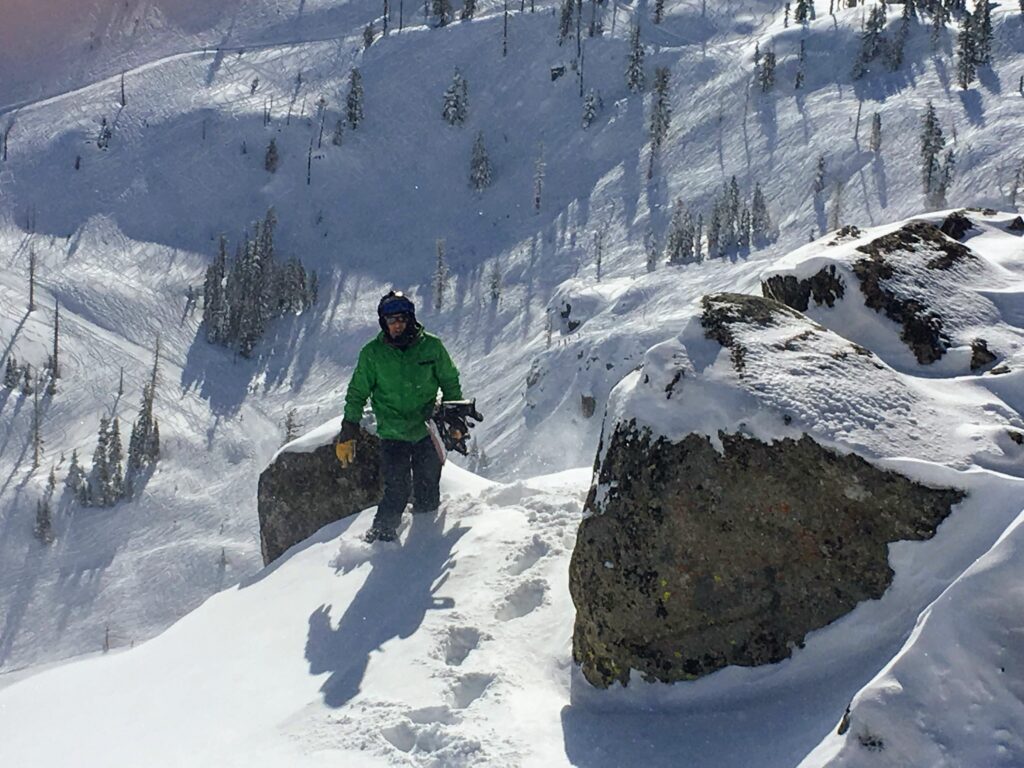
Photo Credit: Richard Bothwell
Part 4 – Backcountry Skiing, Snowboarding (spilt-boarding) Q&A Series
Background timeline context
The boom in backcountry skiing, snowboarding and other snow-sports was brought on by the COVID-19 pandemic as ski resorts started closing down like falling dominoes starting in March of 2020 as state and local counties mandated ‘stay at home’ (SIP) orders as coronavirus outbreaks spiked.
Winter season 2020/21 will likely see similar trends especially pronounced if resorts are unable to implement effective protocols of limiting on-site visitors’ capacity, and social distancing especially indoors in common areas which will result in COVID infection outbreaks resulting in resorts’ closures.
Of particular concern is that finally CDC acknowledges that the coronavirus infection transmission is airborne by aerosols which means it is highly contagious. This fact does not bode well so we’ll see how this flu season and winter months play out.
Back to our topic, our backcountry Q&A feature looks at backcountry from a range of diverse perspectives, from an amateur to expert backcountry skier, from a ski shop small business retailer to backcountry touring guide, these Q&A series provide some key insights and also we’ll list resources to consider for avalanche safety training that is critical to stay safe in the backcountry. Most importantly, we list key resources to connect you with folks who share a passion and love for the backcountry.
Part 4 Q&A interview with interview with Richard Bothwell, Director of the Outdoor Adventure Club (OAC) which has been around since 1996; OAC professional guides have been organizing and leading great adventures all over Tahoe Sierra Nevada and up and down the length of California ..
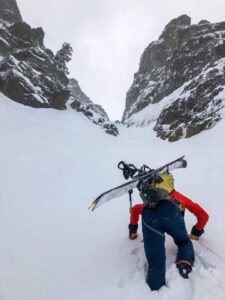
Could you tell us a little about your background in BC, snow-sports and how you came to create your backcountry skiing/Avy training and touring company; how it grew to become one of the best backcountry training camps around?
Sure! I started snowboarding in the early 90’s while living in NYC. In 1996 I moved to SF to help start the Outdoor Adventure Club and started riding at Squaw and in the Lassen backcountry. I also started learning about avalanches and wilderness first aid. I went through the AMGA Backcountry Ski Guide class soon after, as well as going through the AIARE instructor training program. I’ve been teaching/guiding for years, gaining experience in a variety of operations, including LTCC, Feather River College, ASI, and TMS, in addition to my own company. The Outdoor Adventure Club became an AIARE course provider, and permitted to guide backcountry trips in Lassen, where we love guiding and teaching. We’re working with the Forest Service to obtain a permit in Tahoe to teach avy classes in the Truckee area this winter, which will be nice as I live and ski in Truckee.
There are a few things that set the Outdoor Adventure Club backcountry program apart from other companies. We have smaller class sizes. We’re limiting our avalanche classes to 8 students with two instructors this year. Most avy classes have 12 or more students. It’s tough to get to everyone’s questions with that many students. We do a lot of private classes, too. If you have a group, we can set up a custom class just for you and your friends. Mentorship is an important part of backcountry education, so we offer an open door to students who want to follow up and ask more questions after the classes. And we have a FB group just for people who have taken our classes, where you can continue to learn, meet other backcountry skiers/riders, plan trips, etc. In “normal’ years we have everyone in our avalanche classes stay in our house in Lassen during the class. This provides an immersive learning environment, where you can ask questions to your instructor over breakfast or dinner.
How many backcountry training levels do you offer?
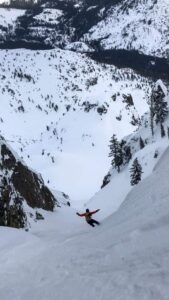
We teach backcountry skills as well as avalanche classes. We also teach online classes on using CalTopo to plan trips.
For people who are new to the backcountry we have a great intro to backcountry program where you learn the mechanics of backcountry skiing/riding, while getting out skiing/riding. We have a one day class in Tahoe and a weekend-long program in Lassen, where (Covid-depending) everyone stays in our cabin there.
We also have AIARE avalanche classes, AIARE 1, AIARE 2 and Avalanche Rescue. And we have a really cool AIARE refresher class, where you go out with a small group and run through your processes, under the watchful eye of a guide/instructor. It’s a unique opportunity for recreational skiers to see if they are applying what they learned in their avy class.
When Covid hit, we pivoted quickly to develop a series of online “mini-classes” focusing on avalanches that people can take as either new material, a refresher, or prep for an avy class. Some people just aren’t able to commit the time to a full class, or they are just interested in one topic, like “what is surface hoar?”..we created a class just for those people.
We have a series of online classes just for using CalTopo to plan trips. There’s so many features to CalTopo, with little documentation, so a lot of people don’t realize the power it has. We get people up to speed using everything from basics to advanced features.
With the impact of resort closures due to the Covid pandemic from mid-March of this year, can you describe from your observations if there’s an increase in demand for backcountry snow-sports?
Oh yeah. There is a huge uptick in interest among people who want to get into the backcountry. I’m hearing from people who want to get into the backcountry for the first time, and I’m hearing from “50-50” folks people who historically split their time between resorts and the backcountry. It seems like everyone wants to get into the backcountry this winter. It’s going to be an interesting, exciting season I’m sure!
What is the most important aspect of backcountry that you would like to get across to new-comers?
Be patient.
There’s a lot to learn and it’s a long, fun process to gain that knowledge. You should take an avalanche class, but taking an avalanche class doesn’t teach you everything you need to know.
Oh, it’s also dangerous…people can/do die going into the backcountry. Fortunately, people don’t die often, but it does happen. And in Tahoe accidents often happen only a short distance from the road.
So what’s important? Be patient. Start with a cup of coffee. Literally and figuratively. Start small, especially with new partners, or going to a new area. If your spider sense is tingling, listen to it. If you realize the group you’re with isn’t behaving how you’d like…bail. The best time to bail is before you leave the trailhead, so get to know your team before you get to the trailhead.
How does a newbie get started?
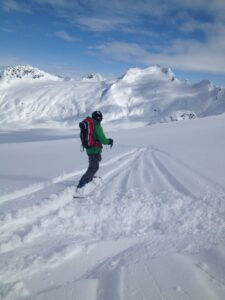
Give me a call at 415.377.1195 and let’s set up a private day of guided skiing or splitboarding! Seriously, going with a guide is a great way to get started. Get out and do it with someone who is well prepared to manage the risks, while also able to choose appropriate terrain for you, and who is a good teacher. That’s a tough mix to find in a recreational setting, especially in groups. Get a couple of friends together to split the cost, and let’s go have some fun!
Take a couple of classes; Take an intro to backcountry class and an AIARE 1 avalanche class. Then go skiing with friends, once you can contribute to the team planning, discussions and decision making.
None of the technical skills of backcountry riding are difficult. Skinning, transitioning, making uphill turns, when to use crampons, etc. I’ve never met anyone who can’t do it. But I’ve met a lot of people who have terrible form, are inefficient and fall over their skis. Spending a day with a guide gets you up the learning curve a lot faster, confirms you’re doing it right, and should put you on a good path for more training.
You can skip classes and get started by going with friends, but we’ve all heard horror stories about being taught to ski by friends in resorts. Think about that dynamic in the backcountry and you can imagine how things can be sub-optimal.
When you do start going out recreationally, start with short, less committing trips. Go out on days when the avalanche advisory suggests the danger level is low. Go out on days with clear weather. Go on trips with easy route-finding. Ski on terrain that is well within your ability level. Go out with people you know. If you feel like your friend is pushing you into something more committing than you’d like, don’t go. No one is forcing you to go backcountry skiing.
We’re lucky these days- there are so many great brands creating great gear. The challenge we have is tuning our gear choices to our objectives. What works well for someone else, doing something else may not be the ideal gear for us. My splitboard boots for day trips are different than my boots for overnight trips, for instance. I chose my ski bindings with an eye toward reliable release. Someone else may priortize light weight.
The essential gear list:
Ski straps
Avy gear- every day, every partner; transceiver, shovel, probe
First aid gear- including splints, pressure bandages, steri strips
First aid training
Rescue gear*- sled, tarp
Repair kit/tool
Headlight
Navigation gear- map, compass, app with your route in it (I’m a big fan of CalTopo)
Communication gear- varies with the location, but includes a whistle for everyone, phone, FRS radios to talk in the team, InReach to get a message out to the outside world
PB&J
*For years I’ve heard people say that rescue sleds are “guide gear”, not recreational gear. Rescue sleds are gear for people who want to be prepared to deal with injuries in the backcountry. People break legs and tear ACLs in the backcountry. If your partner breaks a leg a mile from the car, how are you going to get him/her back? Hitting SOS on your Inreach may get a response, but it could be hours or overnight before help arrives. Are you ready for that?
What mountain guide trips are you planning for 20/21 winter?
What is the takeaway message for newbies, intermediate & advance level BC skiers in regards to what you’d like folks to learn from your experience and outfit?
Go skiing. It’s fun. Do it often. It’s more fun the more you do it. Keep learning.
If you’re new, ease into it.
If you’re intermediate, find a more experienced friend to mentor you and help you sharpen your skills.
If you’re more experienced, help out the newbies. We were all new to the backcountry once. There will probably be a lot of people who could benefit from your insights this season. Don’t take people out on trips over their head, and seek out opportunities to take less experienced people on easier trips.
My trip plans for this year: With the expected influx of so many more people in the backcountry this year, I know the roadside standards/classics are going to be crowded. I’m using that as motivation to explore new areas, go to less well known trailheads, check out some of the lines that I’ve always wanted to ride, but never motivated myself to get after. I’m looking forward to some adventures!
For everyone:
Have a plan for every trip. Sometimes plans are really simple, sometimes not. Reflect on each day, the good ones and the bad ones, so your next trip will be awesome. What did we do that we’d want to do again? When did we first get a sense that things were going sideways? Have frank conversations with partners before, during and after trips…Tell your partners what you expect from them before the trip…hold them to it during the trip, and let them know how they did after the trip.
Pick your partners wisely, and don’t ski with people who rub you the wrong way.
Richard Bothwell
Program Director, Guide,
AMGA SPI Climbing Guide
AIARE Level 1 and 2 Avalanche Educator
PSIA Ski Instructor &
CFO (Chief Fun Officer)
Outdoor Adventure Club
“Make every weekend count!”
415.377.1195
For more information, browse events and outings at OutdoorAdventureClub.com
Outdoor Adventure Club backcountry ski and snowboard program
Outdoor Adventure Club online classes
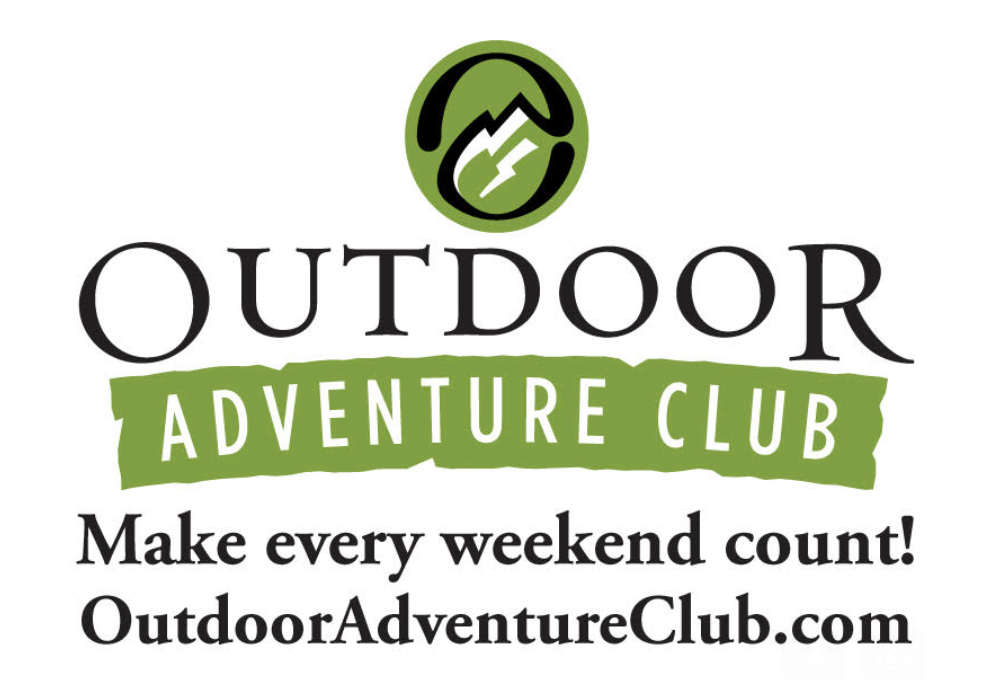
Part 1
Part 2
Part 3
Part 5
Part 6
Interview with Shane Robinson Owner & Lead Guide at Graybird Guiding based out of Mt. Baker, WA
Part 7
Backcountry Skiing, Snow-Sports Resources
✔ San Francisco Backcountry Skiers Facebook Group: ‘San Francisco Backcountry Skiers (and Riders) is a resource and inspiration for people in the San Francisco area (and beyond) who are interested in backcountry skiing and riding. SFBS welcomes both experienced and aspiring backcountry skiers and riders.’ Membership type: free, public group. 3.3k members. Visit their FB group page.
✔ SnowPals.org is a non-traditional snow-sports club for busy Bay Area professionals. Join SF Bay Area professionals to expand your circle of ski and ride buddies (resort based and backcountry), btw, that’s how we came up with our name: Snow (Snow-Sports) + Pals. Membership type: one-time paid membership fee of $20; join SnowPals. Read members’ intros to get an idea who joins. Founded in 1999 by a small group of friends; we are now 8,249 members and growing. Celebrating our 21st year of connecting folks to expand their circle of snow sports activity partners.
✔ Lake Tahoe Backcountry Ski Topographic Maps and Guidebook
✔ California Ski Company in Berkeley is one of the top ski shop retailer for ski gear for sale and rentals, plus boot fitting and equipment service. Cal Ski Co is a ‘specialty ski shop focused on ski equipment sale and rental since 1989. They sell and rent equipment for both Resort and Backcountry Ski Touring. Their team of expert ski boot fitters are the best in the business. They repair and tune about anything that slides on snow. Looking for a job? Cal Ski Co is currently hiring as of October 29, 2020. Full-time and part-time employment available: job openings, ski tech and boot-fitter. Experience is desirable but not necessary. The only criteria is that you are a skier. Interested or know of someone who is? Email resumes to .’
✔ Backcountry and Outback Adventures for Telemark and Randonee Ski Rentals, Fremont, CA and Larkspur, CA – Outback Adventures is a comprehensive outdoor adventure guide service, rental shop, and paddlesports and nordic ski specialty retailer located in the San Francisco Bay Area.
✔ Sequoia National Park Lodging WUKSACHI LODGE
Located in the Giant Forest area of Sequoia National Park, Wuksachi Lodge is a modern lodge with 102 guestrooms. It offers a cocktail lounge, a full service restaurant and both a retail and ski shop. At an elevation of 7,050 ft. (1,980 m), Wuksachi Lodge is only 4 miles away from the Giant Forest Museum.
Delaware North Parks & Resorts offers multiple services like overnight accommodations, retail, food and beverage, etc. at Kings Canyon National Park in the area of Grant Grove and Cedar Grove. Limited Internet is available in some areas of the main lodge. Wuksachi Lodge is open throughout all the seasons.
At an elevation of 6,500 ft (1,980 m), the Grant Grove Cabins is located in the Grant Grove area of Kings Canyon National Park. It offers 6 types of cabins; some are even opened all year. Main attractions like a sequoia grove, gifts shop, markets and restaurants are half a mile (800m) away from the Grant Grove Cabins. Open: All Year (limited in the winter)
✔ PEAR LAKE WINTER HUT
Managed by the Sequoia Parks Conservancy, Pear Lake Winter Hut is a rustic hut of 10 bunk beds that opens during winter and requires reservations but only for wilderness skiers who travel to Pear Lake during the cold season. At an elevation of 9,200 ft. the hut sits high above Lodgepole. This hut includes a wood-pellet stove. To get to it, you need to go through six miles on skis or snowshoes. Reservations can be made online or by phone: 559-565-3759.
Got a key backcountry resource not listed here that you’d like to share? Contact . Advance thanks for sharing.
* Browse Tahoe area rentals and private seasonal ski leases:
🏂
http://www.snowpals.org/rentals/
* Browse shared ski leases: :
🏂
http://www.snowpals.org/leases/
* How to increase bookings for your rental, ski lease listing on Airbnb, VRBO, HomeAway, FlipKey, Craigslist:
🏂
http://www.snowpals.org/2020/property-owners-guide-tips-create-appealing-listing-vacation-rental-ski-lease/
♥ Share this page with friends and family via , twitter, facebook.


 Francisco Gomez holds a B.S. in Exercise Physiology; currently earning a Masters in Exercise Physiology; National Exercise & Sports Trainers Association(NESTA) Certified Trainer and award winning college coach. Francisco enjoys skiing and snowboarding at Squaw Valley.
Francisco Gomez holds a B.S. in Exercise Physiology; currently earning a Masters in Exercise Physiology; National Exercise & Sports Trainers Association(NESTA) Certified Trainer and award winning college coach. Francisco enjoys skiing and snowboarding at Squaw Valley. Juan Gomez holds a B.S. in Business Marketing; currently earning a Masters in Exercise Physiology; top running athlete and cross-country running coach. Juan’s favorite Tahoe resort for snowboarding is Heavenly.
Juan Gomez holds a B.S. in Business Marketing; currently earning a Masters in Exercise Physiology; top running athlete and cross-country running coach. Juan’s favorite Tahoe resort for snowboarding is Heavenly.